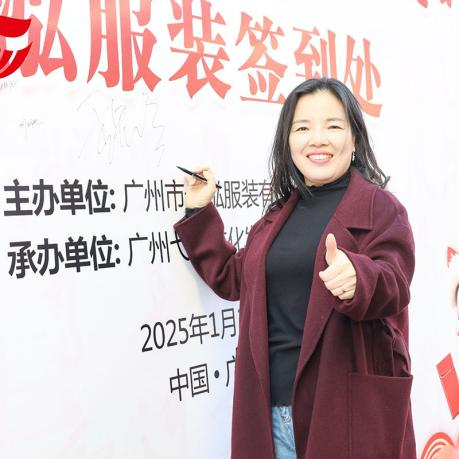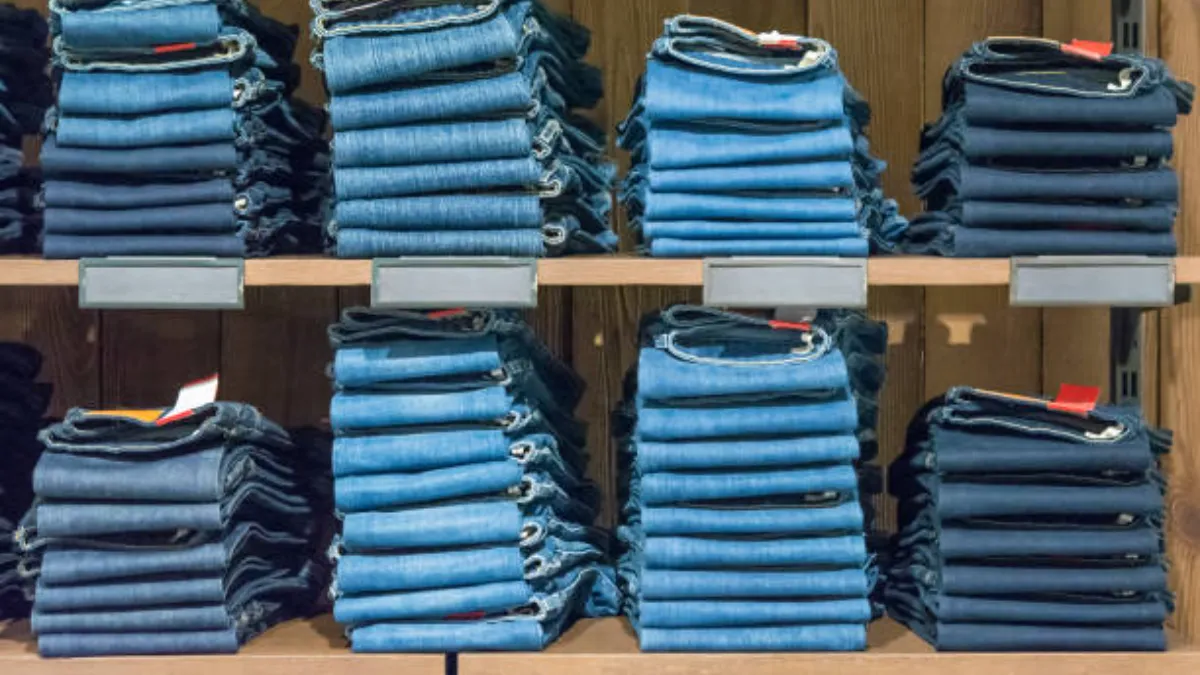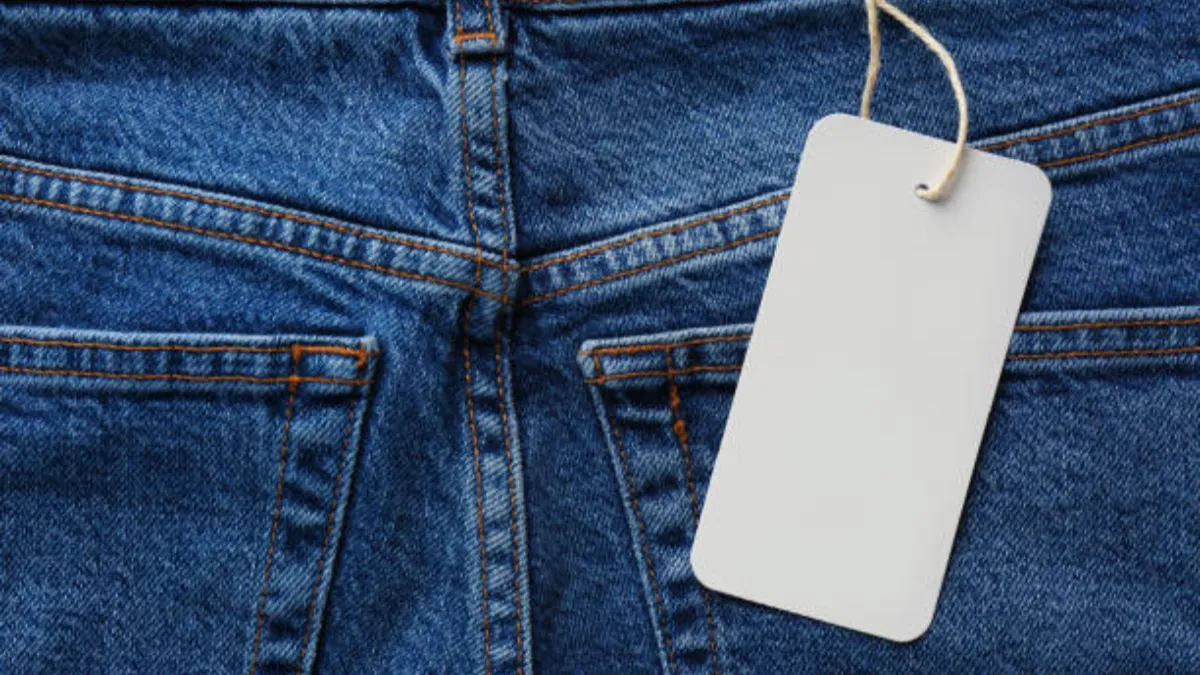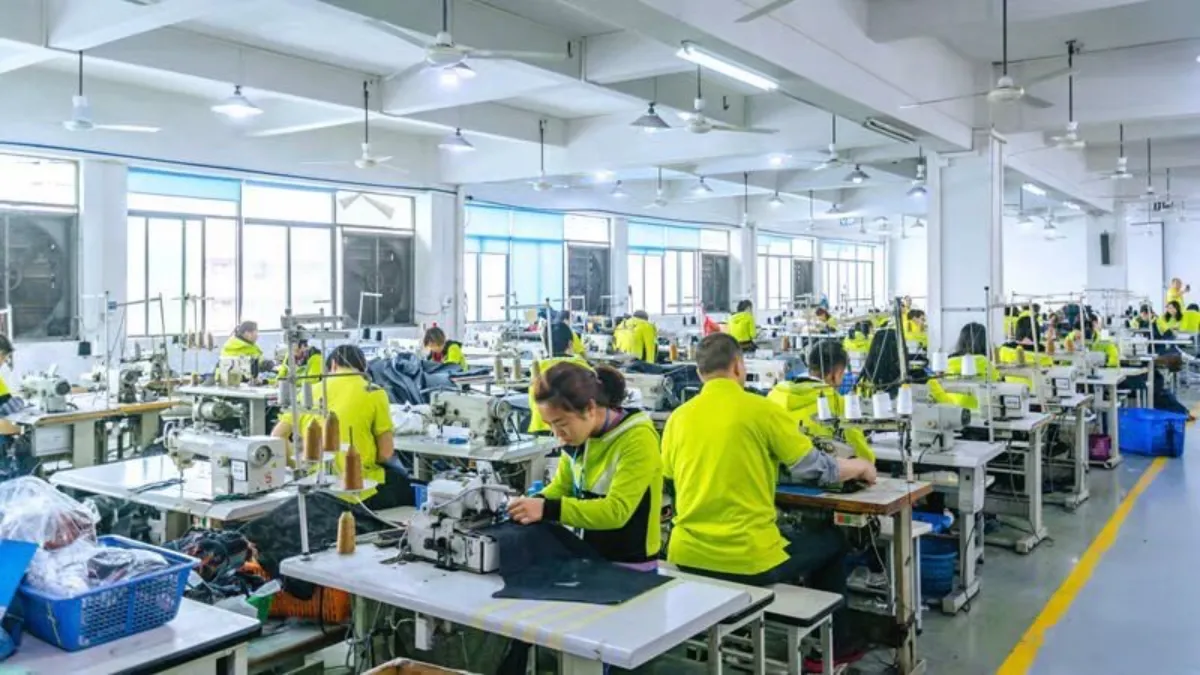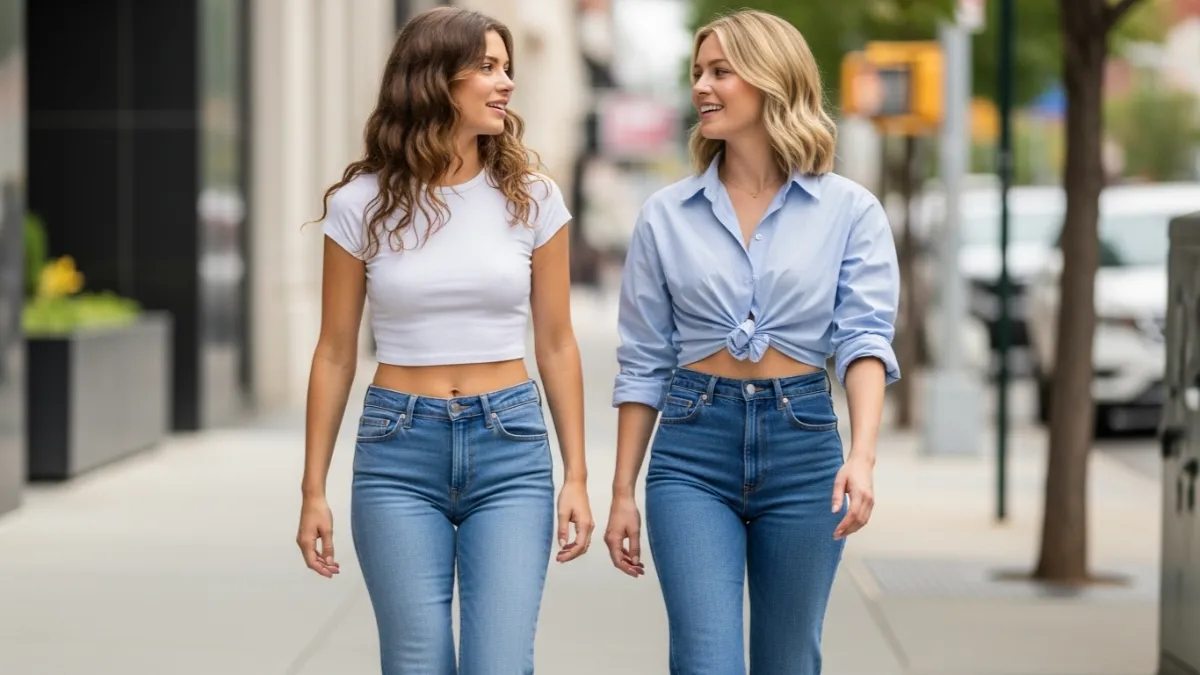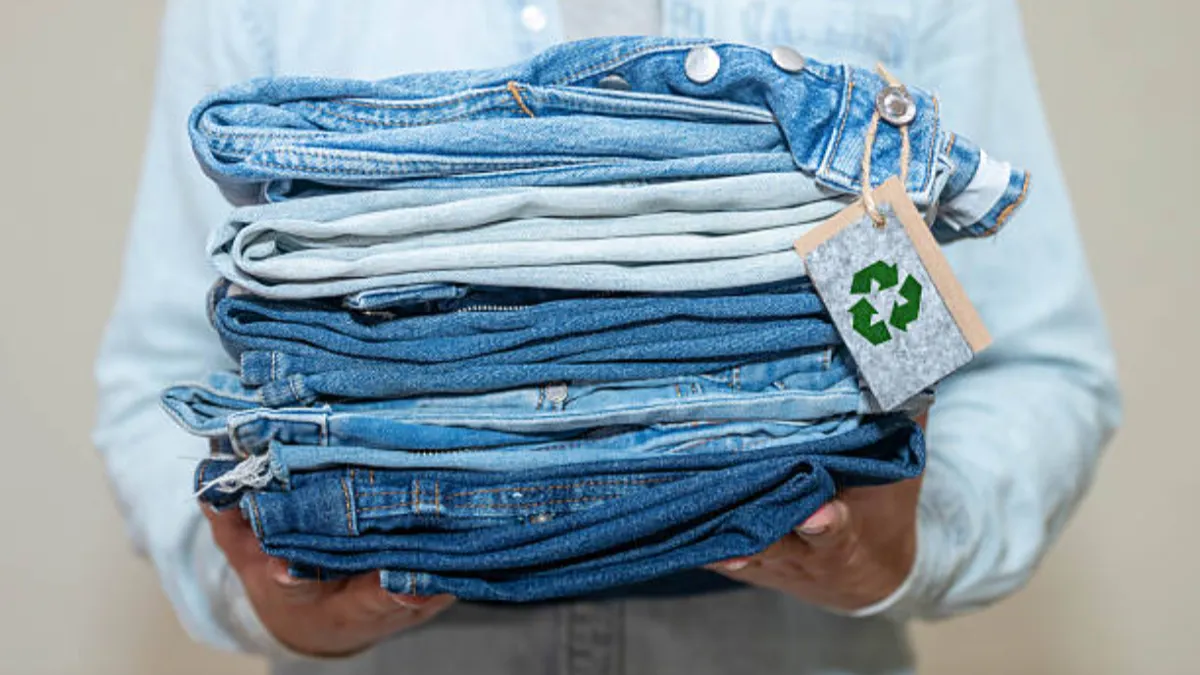Choosing between low-rise and high-rise denim jeans impacts your pattern work, fabric planning, and market fit. This guide gives technical designers and sourcing managers clear comparisons in rise measurements, grading needs, and consumer demand, so you can align yield efficiency and waistband engineering with your target demographic.
Comprehensive Rise Measurement Table
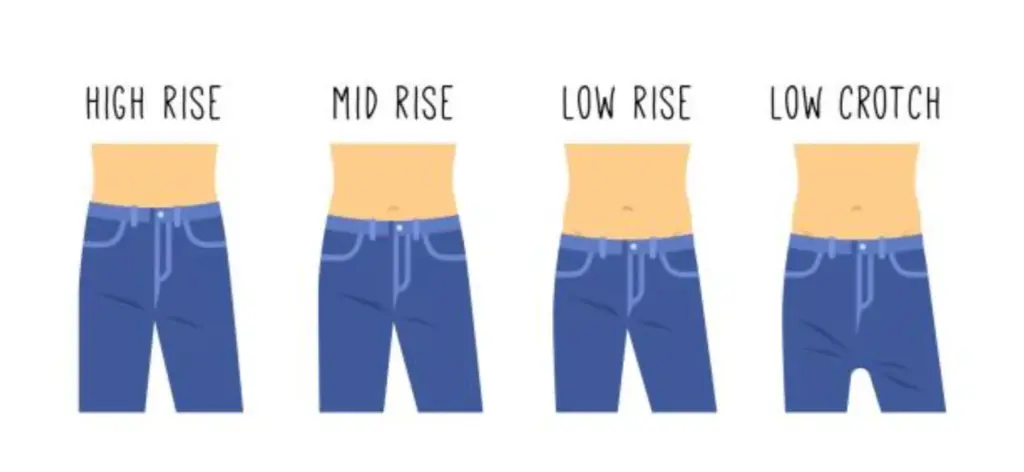
| Pant Type / Rise Category | Front Rise (Zoll) | Back Rise (Zoll) | Typical Fit Notes |
|---|---|---|---|
| Women’s Ultra Low Rise | 5.5" – 6.5" | 9.5" – 10.5" | Sits well below the hips; Y2K look; minimal coverage. |
| Women’s Low Rise | 7" – 8" | 11" – 12.5" | Sits 2–3" below the natural waist; trendy for young consumers. |
| Women’s Mid Rise (Regular) | 8.5" – 9.5" | 12.5" – 14" | Balanced comfort; suitable for most body shapes and daily wear. |
| Women’s High Rise | 10" – 11.5" | 14" – 15.5" | Covers the waistline; supportive and figure-flattering. |
| Women’s Super High Rise | 12" – 13.5" | 15.5" – 17" | Maximum coverage; shaping styles and vintage silhouettes. |
| Men’s Low Rise | 9" – 10" | 13" – 14" | Slightly higher than women’s low rise; improves mobility and comfort. |
| Men’s Mid Rise | 10" – 11" | 14" – 15" | Standard men’s jeans rise; works across slim, straight and relaxed fits. |
| Men’s High Rise | 11.5" – 12.5" | 15" – 16" | Often used in workwear and heritage fits; extra room in seat and belly area. |
What Are Low-Rise Jeans?
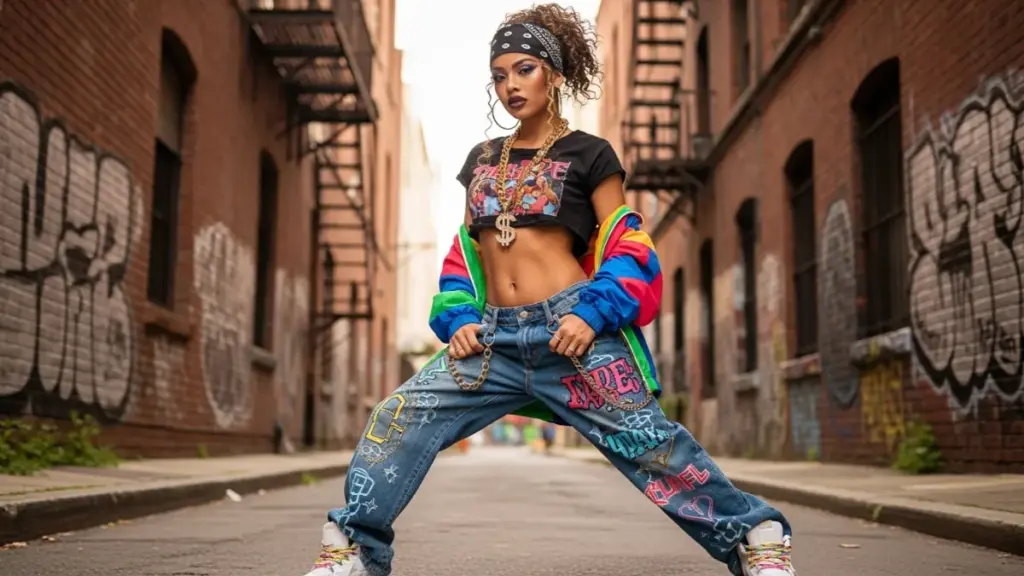
Low-rise denim jeans feature a rise of about 7–8 inches from waistband to crotch seam, sitting roughly 2–3 inches below the navel at the hip bones. This lower placement draws the eye downward, ein elegantes Erstellen, fitted profile across hips and thighs. The look reads casual and youthful, serving trend-led assortments well. Leg shapes can range from straight to bootcut or skinny, allowing teams to diversify cuts while staying in the same rise category.
Low-rise denim jeans have experienced recurring popularity cycles over the years. Initially trending in the late ’90s and early 2000s, they resurfaced in recent years thanks to celebrity influence and social media exposure. These jeans often appear in seasonal capsule collections, allowing brands to respond quickly to shifting trends. Aligning production and marketing with these peaks helps brands capitalize on the temporary surge in demand and maintain strong market relevance.
Who Buys Low-Rise Jeans?
Low-rise jeans attract several trend-responsive consumer groups:
- Younger shoppers influenced by social media culture
The silhouette aligns with Y2K, pop-culture, and celebrity-driven styling. - Consumers drawn to bold, midriff-focused looks
Low-rise fits support expressive, fashion-forward outfits common in streetwear and festival dressing. - Audiences engaging in fast-moving trend cycles
These jeans perform well in limited drops, seasonal capsules, and short-run fashion programs. - Retailers targeting youth-centric or style-driven segments
Fast-fashion, trend boutiques, and urban apparel lines frequently include low-rise options to match rapid style shifts.
Pros and Cons of Low-Rise Jeans (Fit & Produktion)
Vorteile
1. Strong Fashion Cycles and Youth-Driven Appeal
Low-rise silhouettes regularly reappear during Y2K, Streetwear, and celebrity-driven revivals. Their emphasis on the hip line makes them a frequent feature in seasonal trend updates, helping brands introduce fresh statements without major pattern overhauls.
2. Lower Material Consumption
Compared with mid- or high-rise designs, low-rise jeans shorten the rise height and reduce waistband coverage. This can slightly decrease fabric usage and improve marker efficiency, particularly in high-volume orders.
3. Lightweight Wearing Sensation
The lower waistband position reduces coverage around the midsection, creating a less restrictive, lighter-on-the-body feel. This makes low-rise fits naturally suitable for warm climates and summer collections.
Nachteile
1. Increased Fit Sensitivity Around the Hip Curve
Low-rise patterns rely heavily on precise hip contouring. Any minor issue in grading, waistband easing, or yoke angle becomes more noticeable and can result in slippage, back gaping, or instability during movement.
2. Higher Sample Iteration Requirements
Perfecting the balance between comfort and secure fit often requires more sample rounds. Adjustments to stretch percentage, waistband reinforcement, and rise proportions typically undergo multiple refinement cycles before production approval.
3. Limited Shape Versatility Across Sizes
Because the waistband sits below the natural waist, variations in hip-to-waist ratios affect fit consistency more strongly. Maintaining uniform performance across a full size range is more challenging than with mid- or high-rise styles.
With these challenges in mind, brands often look for denim jeans suppliers who can manage precise pattern tuning, consistent stretch recovery, and stable wash performance. Changhong supports this with disciplined grading systems, reliable denim fabric partners, and multi-round fit validation—ensuring low-rise Jeans Jeans maintain both comfort and silhouette control from sample to bulk production.
What Are High-Rise Jeans?
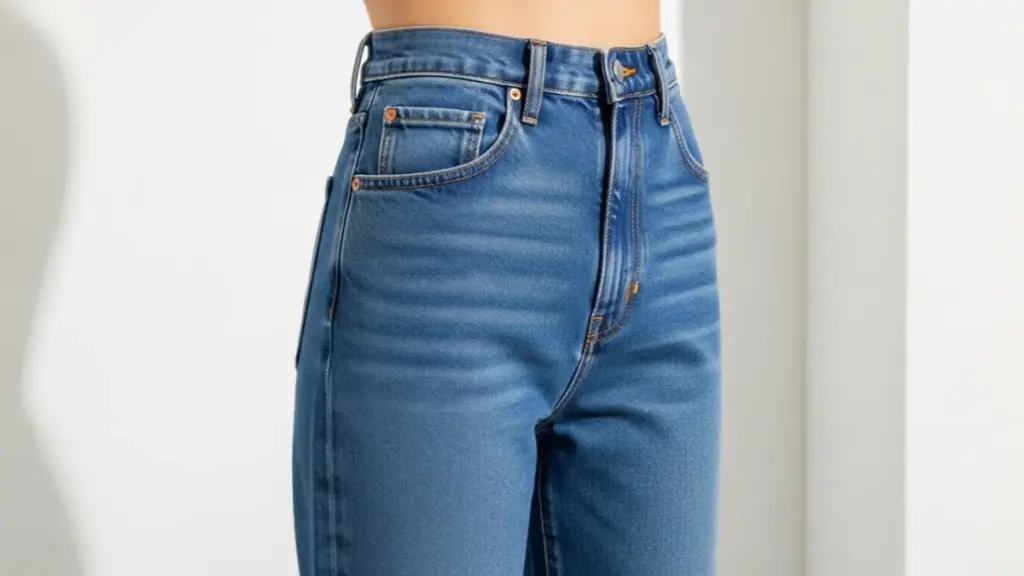
In production, a high-rise typically measures 10 inches or more from crotch seam to waistband, with premium fits reaching 12–13 inches. The waistband sits at or above the natural waist, requiring reinforced construction and exact seam alignment to hold shape through wear and laundering. Premium-positioned brands should approve final rise specs during sampling, as even minor variances can compromise silhouette integrity.
High-rise denim jeans continue to show steady demand across global markets. Their cycle is less volatile than low-rise styles, as the silhouette works well for everyday wear, Büro lässig, and elevated fashion lines. Over the past decade, high-rise fits have remained a core category in women’s denim, supported by comfort-focused trends and the ongoing shift toward body-contouring waistlines.
Recent seasons show renewed interest in structured, vintage-inspired shapes—straight, wide-leg, and rigid-denim high-rise jeans—driven by retro styling and sustainability messaging. Because these rises complement a wide range of tops and outerwear, they integrate smoothly into seasonal collections and maintain strong repeat sales. For brands building stable denim assortments, high-rise jeans continue to act as an anchor fit with reliable long-term performance.
Who Buys High-Rise Jeans?
High-rise jeans appeal to several consistent consumer segments:
- Shoppers who want comfort and waist support
The higher waistband offers stability and coverage, making it a go-to choice for everyday wear. - Consumers drawn to clean, timeless silhouettes
High-rise fits align well with straight, wide-leg, and vintage-inspired shapes that remain strong across seasons. - Style-focused buyers who prefer longer leg lines
The elevated waist visually elongates the body, attracting customers who value a balanced, flattering profile. - Demographics looking for reliable, versatile fits
From young adults to mature shoppers, high-rise jeans serve a wide range of body types and style needs. - Markets emphasizing structured or refined collections
Prämie, lifestyle, and workwear lines often use high-rise foundations for their durability and consistent fit performance.
Premium Custom Denim Tailored for Your Brand
Partner with Guangzhou Changhong Garment Co., Ltd. for expertly crafted denim with deep customization options, low minimum orders, and eco-friendly production. Elevate your brand with versatile styles and sustainable fabrics made in our integrated factory.
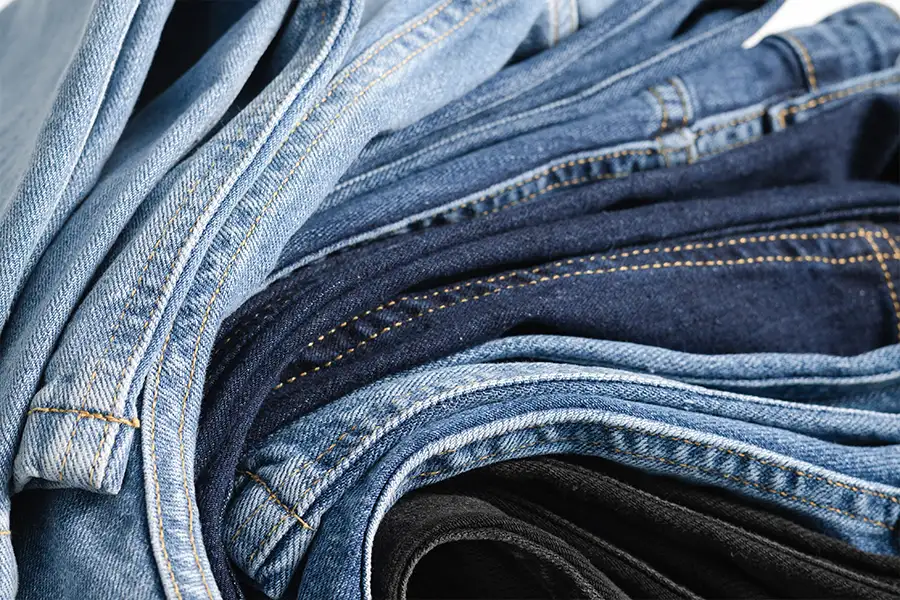
Pros and Cons of High-Rise Jeans (Fit & Produktion)
Vorteile
1. Works Well for Many Body Types
High-rise jeans sit at the natural waist, which gives a clean look and suits a large range of customers. This makes them a safe and steady option for many product lines.
2. Better Support and Smoother Shape
Because the waistband sits higher, the jeans stay in place and give more support around the midsection. This creates a neat, long-leg effect and often leads to fewer fit complaints.
3. More Stable Fit Across Sizes
High-rise patterns are easier to grade because the waist sits at a point with less shape change. This helps styles stay consistent from small sizes to plus sizes.
Nachteile
1. More Fabric and Slightly Higher Cost
A higher rise needs extra fabric in the front, back, and waistband. This increases consumption, especially for heavier or premium denim.
2. Needs Careful Pattern Work
High-rise jeans must balance the front and back rise so the wearer can sit, bend, and walk comfortably. If the shape is not right, the waist may feel tight or pull during movement.
3. Waist Fit Must Be Very Accurate
Because the waistband sits higher on the body, small issues in stretch, shaping, or interfacing can be felt right away. High-rise jeans often need one more round of fit checks to make sure the waist holds its shape after washing and daily wear.
Key Differences Between Low-Rise and High-Rise Jeans
Comparing low-rise and high-rise jeans from a production standpoint enables design and procurement teams to match specifications with target market positioning. The table below shows critical differences into decision-ready data for pattern grading, Kostenkontrolle, and fabric planning.
| Category | Low-Rise Jeans | High-Rise Jeans |
|---|---|---|
| Rise Height | 7–8 inches; below hips | 10–13 inches; at/above waist |
| Fit Feel | Lässig, relaxed, youthful | Supportive, structured, comfortable |
| Body Shape | Emphasizes hips | Defines waist and lengthens legs |
| Production Complexity | Simpler construction | More reinforcement and precision |
| Fabric Usage | Untere | Höher |
| Trend Behavior | Fast-changing fashion cycles | Stable, long-term appeal |
| Risk Areas | Gaping, slippage, wash shrinkage | Waist tightness, front rise strain |
Low-Rise vs. High-Rise Jeans: Strategic Fit Decisions for Your Brand
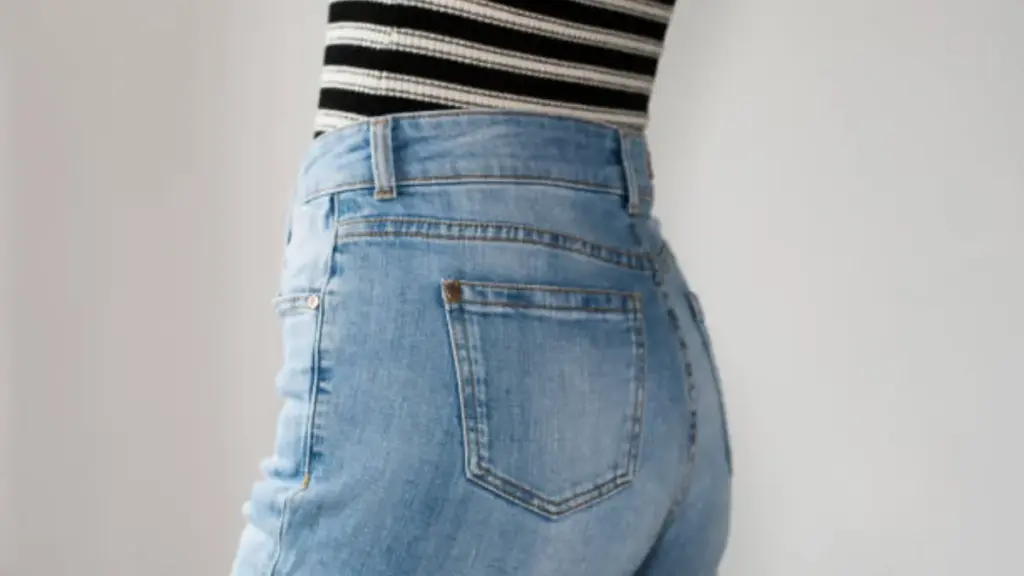
When planning a denim range for 2026, align fit choices with trend momentum and buyer profiles. The low-rise versus high-rise decision influences styling versatility, production demands, and market reach. Assess where each sits in the trend curve, its demographic appeal, and the impact on margin protection and sell-through.
Low-rise remains energized by the Y2K revival, with loose cuts on Chanel runways and amplified by celebrity streetwear from Kendall Jenner and Hailey Bieber. Strong social media traction drives fast turnover for fashion-sensitive segments but requires precise waistband sampling to avoid costly rework. High-rise anchors lines with broad age appeal and consistent sell-through; relaxed longer cuts emerging in 2026 meet demand for comfort while supporting predictable replenishment. Material budgets may vary with extended lengths, so monitor fabric consumption closely.
Low-rise pairs best with cropped tops and oversized layers for youthful collections, while high-rise complements tucked blouses and structured jackets in formal merchandising. Trend-led brands should leverage low-rise to capture current demand; those prioritizing stability should retain high-rise. A balanced mix helps mitigate volatility and keeps denim profitable across multiple segments.
Abschluss
Low-rise and high-rise denim jeans play different roles in denim design, fit engineering, and market performance. Low-rise fits work best in trend-driven youth markets but need precise pattern work to prevent gaping and slippage. High-rise fits offer wider appeal, stronger support, and longer fashion cycles but require more fabric and tighter sewing control.
If your next collection needs dependable low-rise or high-rise development, Changhong can support you from pattern setup to bulk production. Our team handles detailed rise adjustments, consistent waistband shaping, and controlled wash performance to keep your fits stable across sizes. Reach out to explore samples or discuss your upcoming denim line.
FAQs
Below are core questions we address with product developers and sourcing managers when evaluating low-rise and high-rise jeans. Each response is grounded in production and market insight, aimed at reducing risk and protecting quality.
How does rise affect fabric yield?
Rise alters the length of pattern pieces, directly affecting fabric needed per unit. High-rise adds length in the waist and upper hip, increasing fabric use versus low-rise. To control cost, trial marker layouts for both rises before bulk production, then adjust to maximize yield and minimize waste.
Which rise fits better in global markets?
Preferences differ by region. Current demand in North America, Europa, and much of Asia favors high-rise jeans for waist shaping and comfort. Low-rise maintains traction in youth-driven and niche segments. Match designs to regional trend data and retailer input to hit the right demographic and price position.
How to maintain fit consistency?
Start with accurate rise measurement and follow approved patterns without deviation. Conduct fit tests on pre-production and initial bulk runs to identify variances early. Keep tech packs and quality checklists aligned across all teams to avoid rework and ensure consumers receive a uniform fit across the range.
What fabric blends work best for different rises?
High-rise styles benefit from denim with greater stretch for comfort over waist and hips. Low-rise performs well with firmer cotton-rich blends to hold shape at the lower waistline. Combining cotton, Elastane, and polyester lets you fine-tune recovery, Haltbarkeit, and comfort for each rise. Test multiple blends before locking fabric to reduce returns.
How to test rise accuracy?
Use calibrated tools and a consistent measurement process at every stage. Verify dimensions on pattern pieces and sewn samples to ensure they meet design intent. Run fit tests with models or mannequins before releasing styles to mass production; skipping this can cause inconsistent sizing and damage brand credibility.

